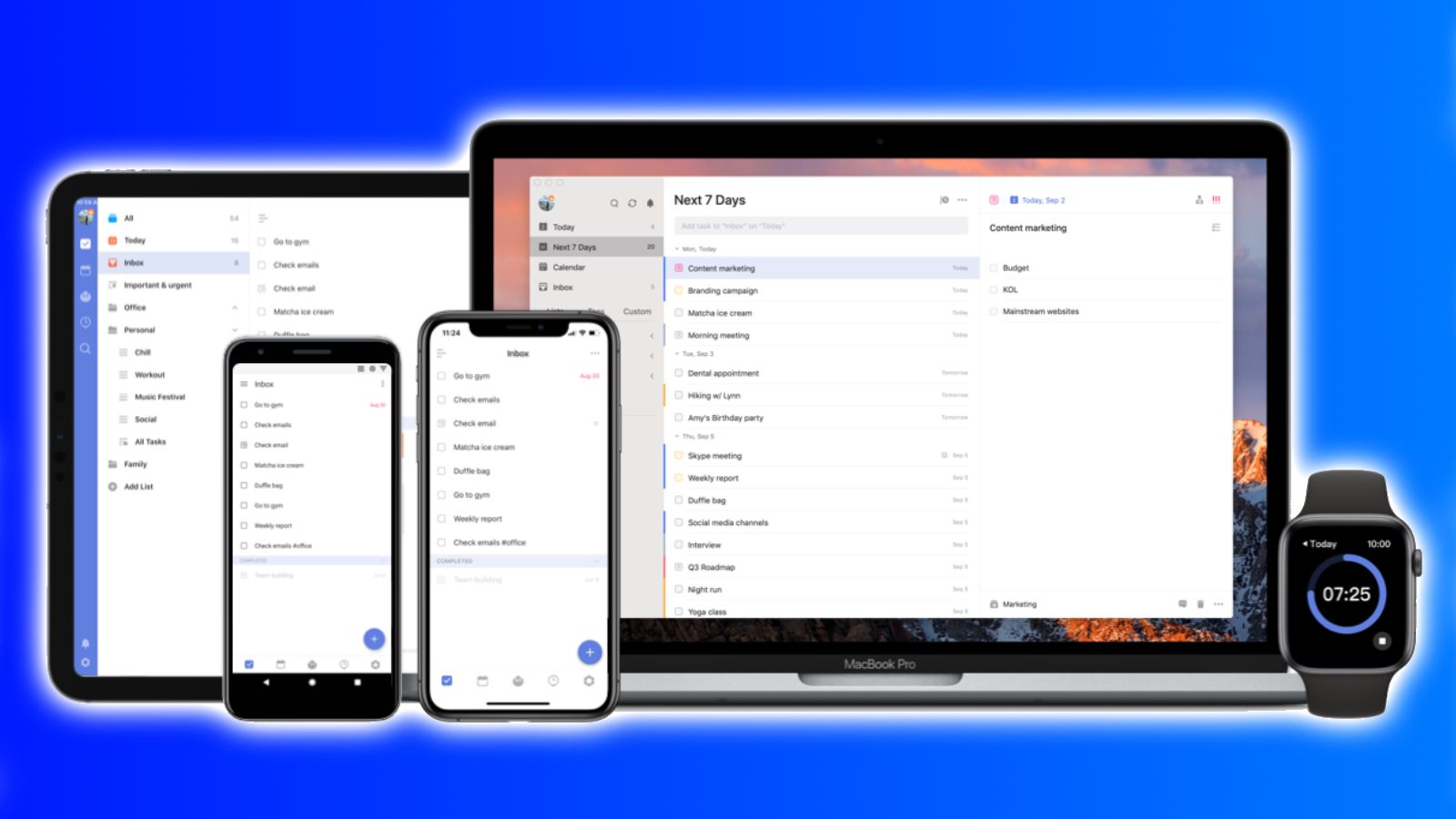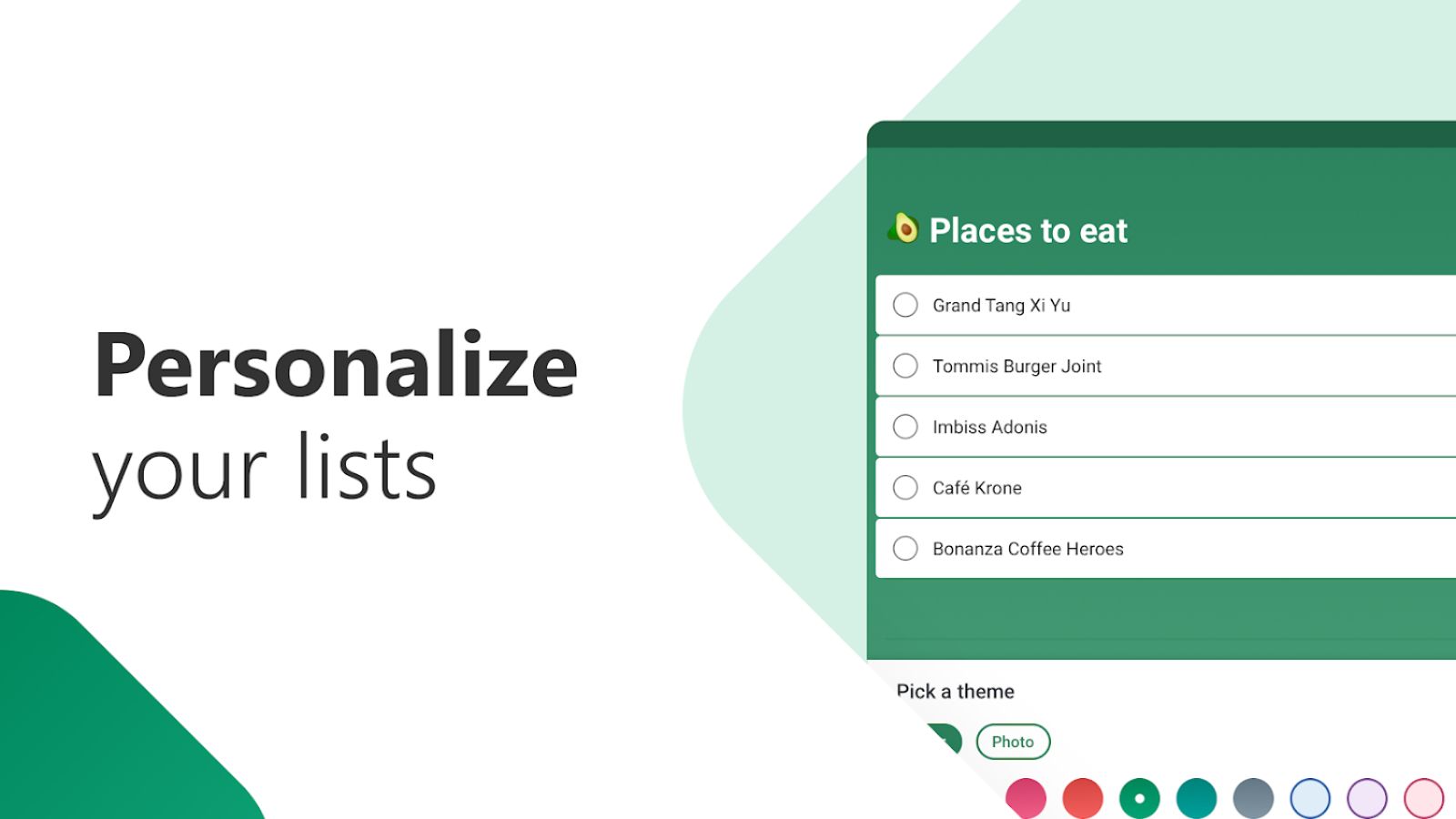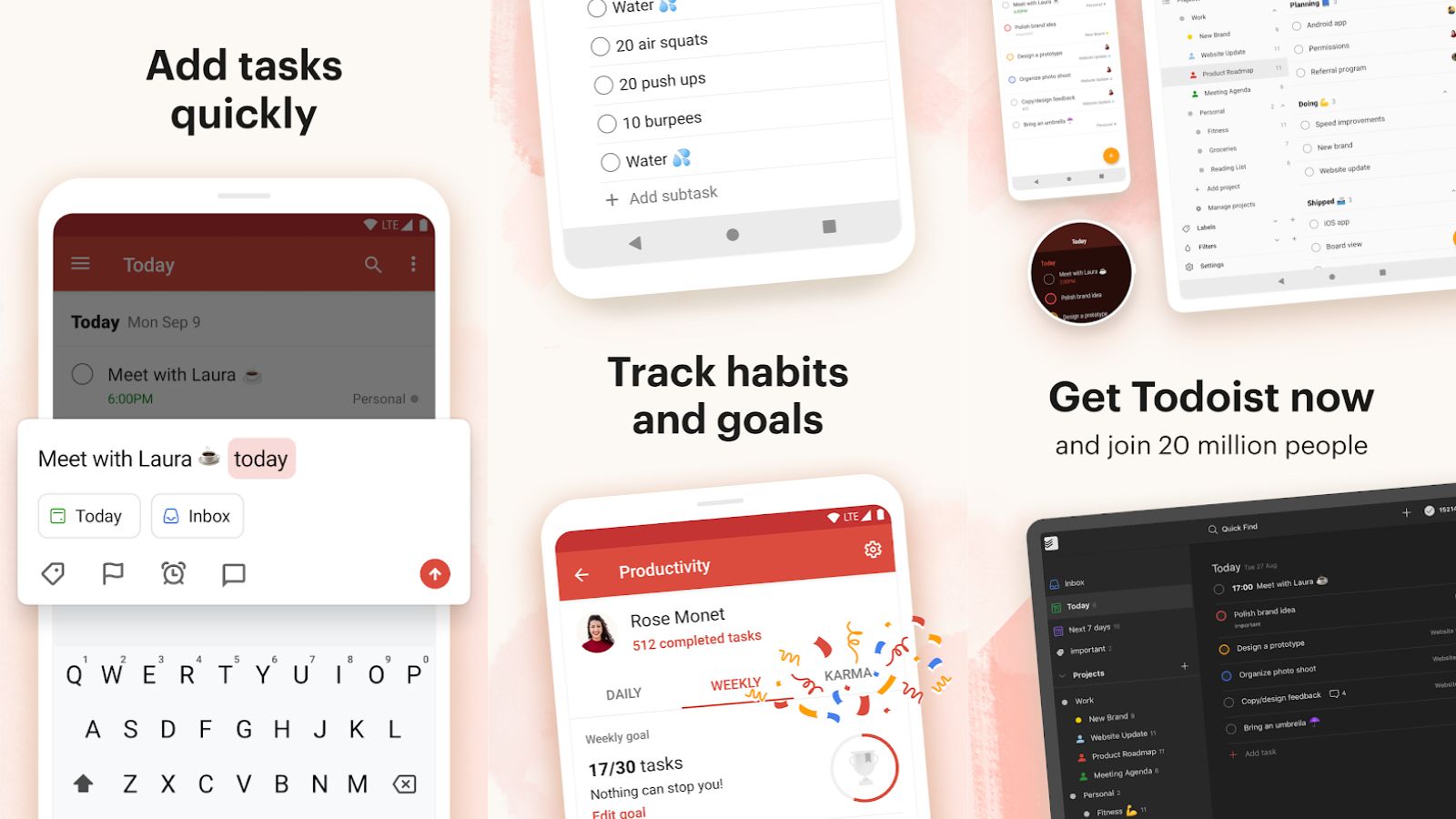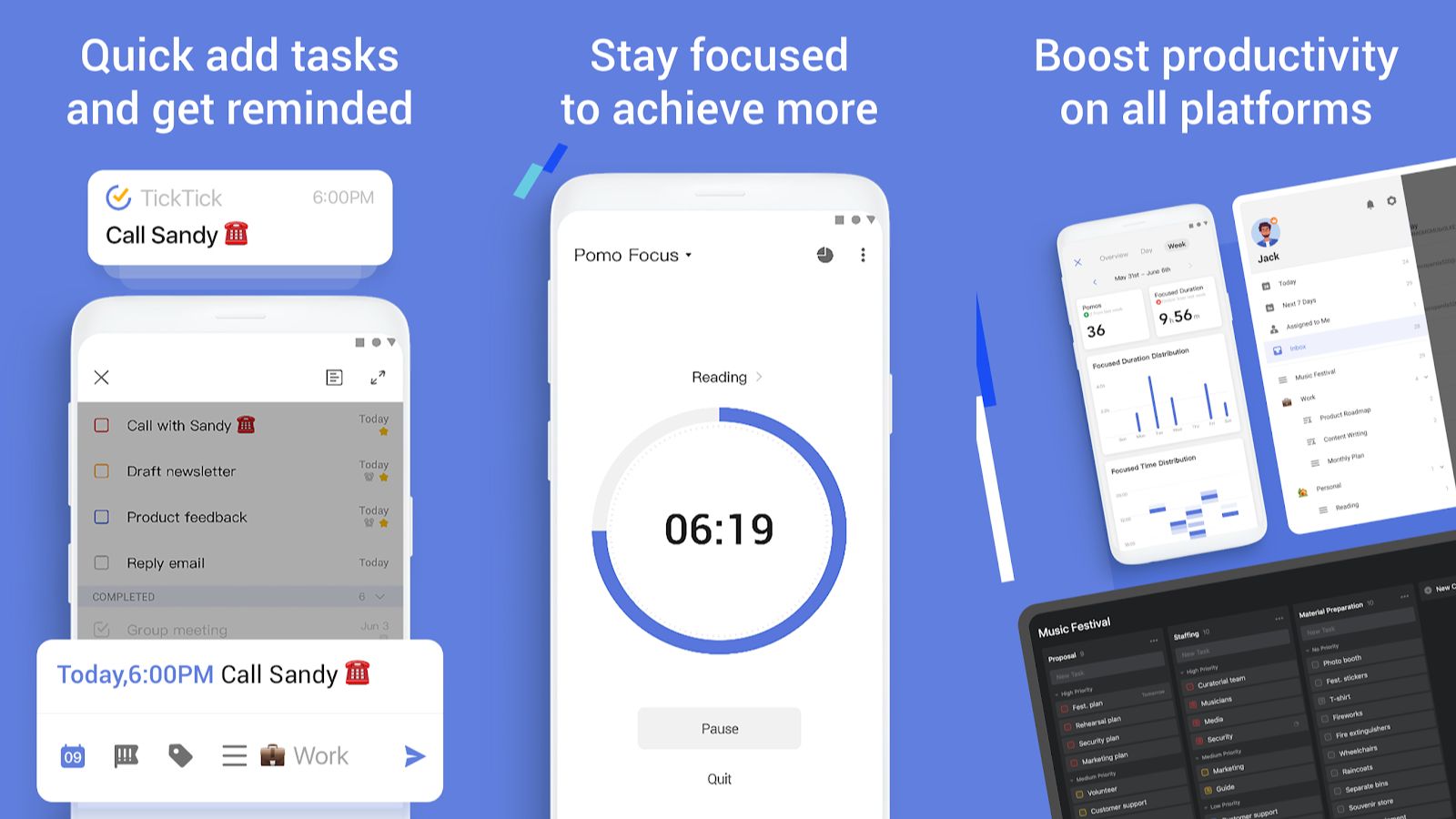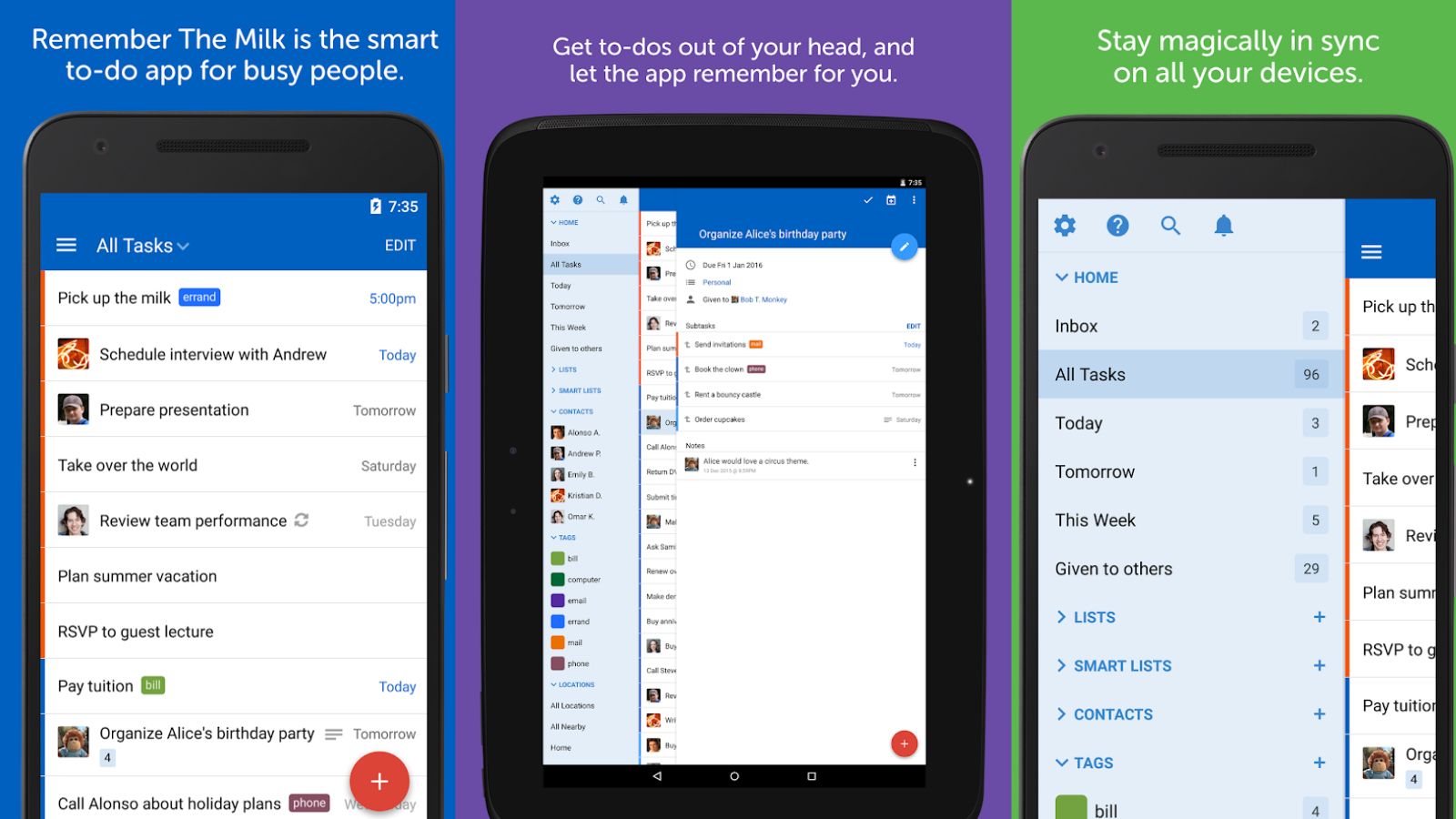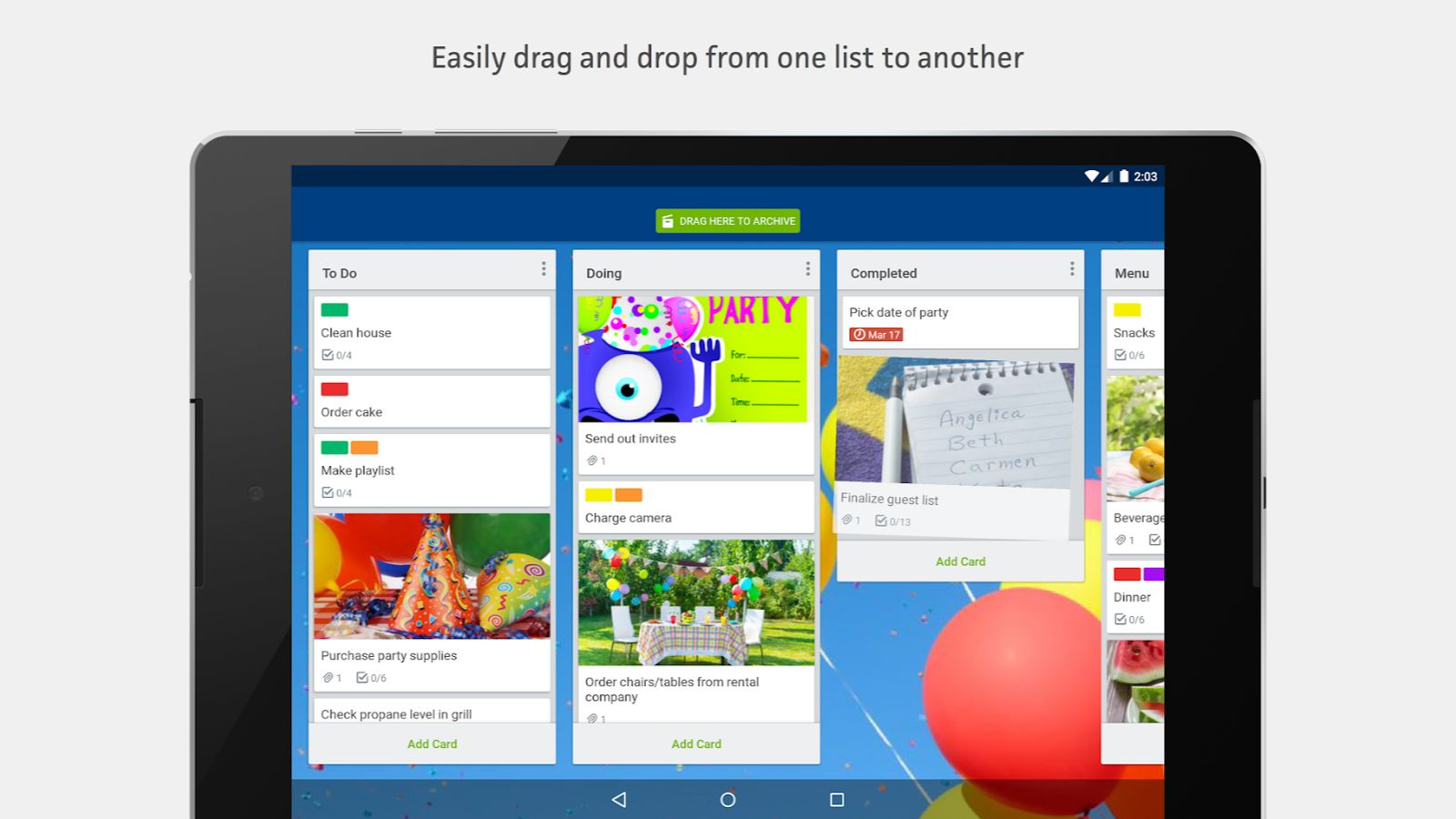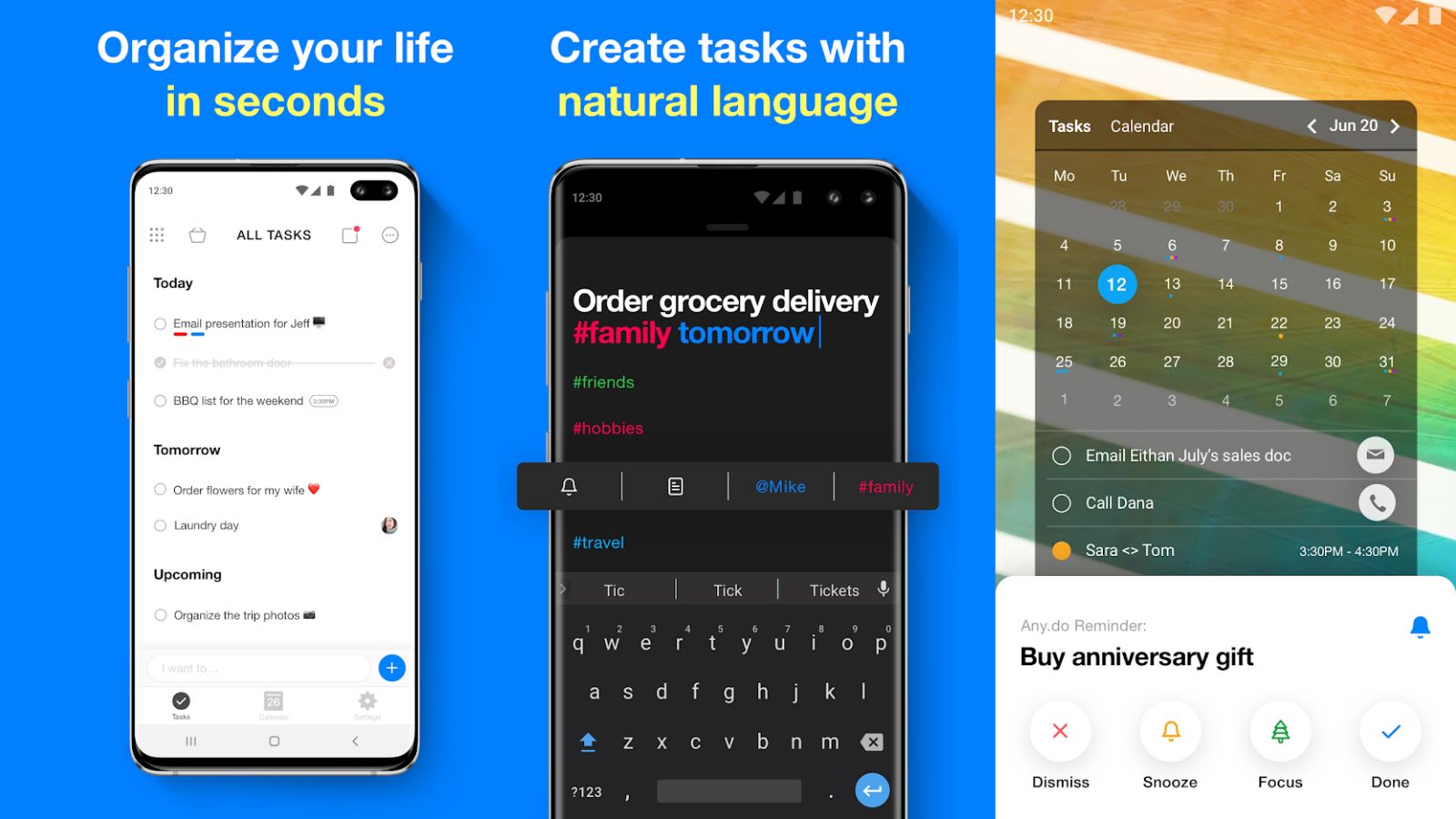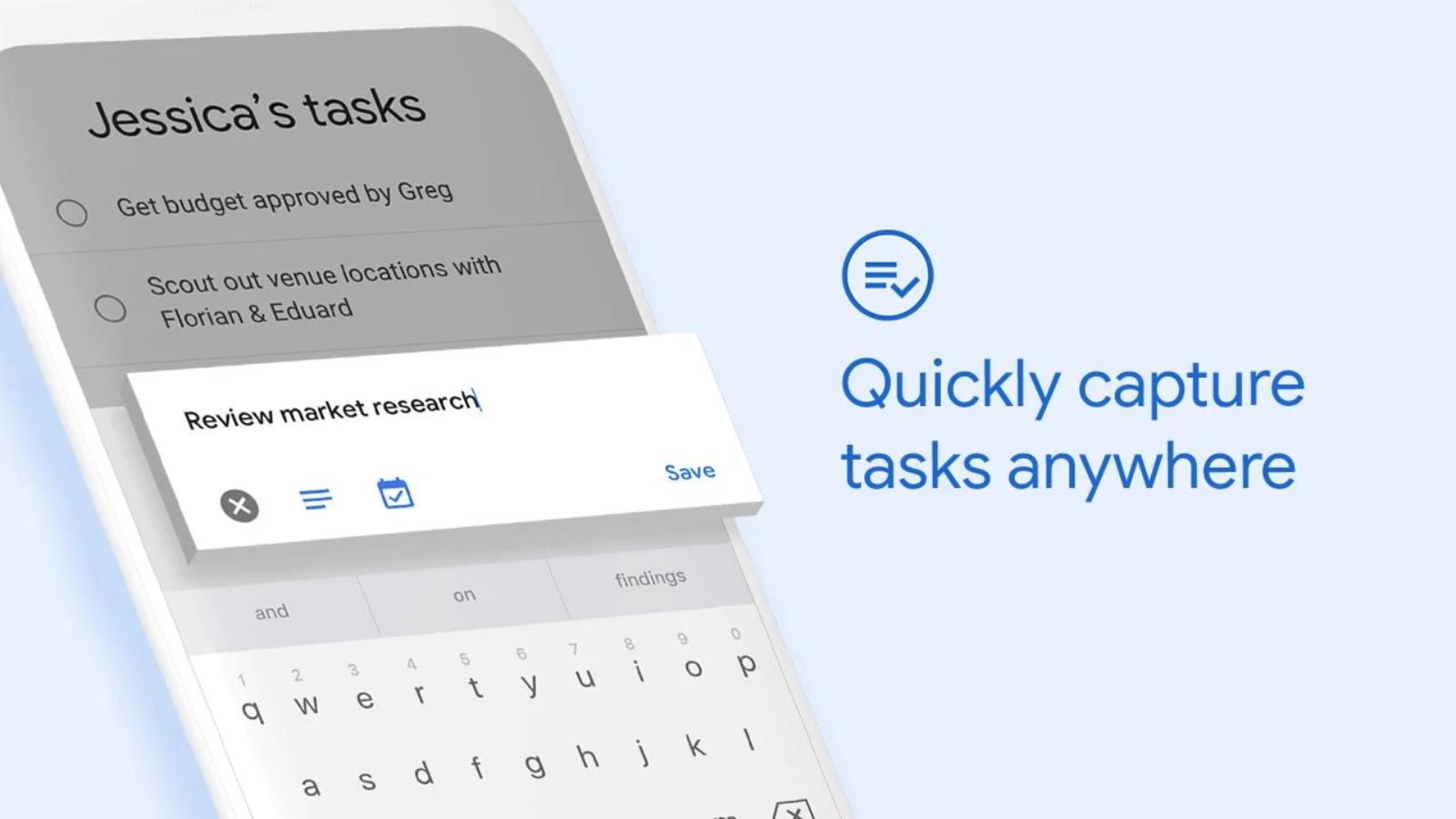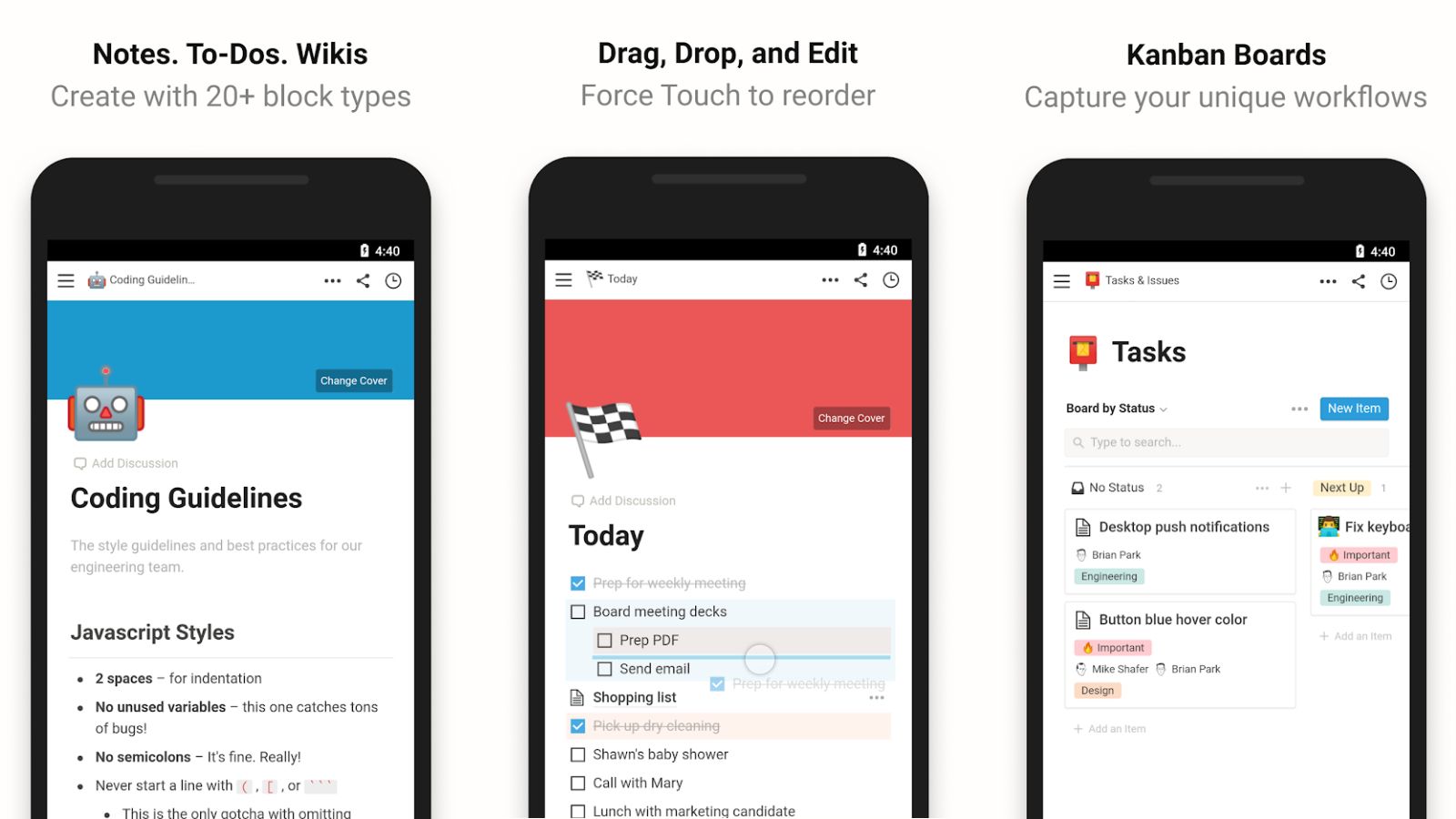Read update
- Updated pricing for Todoist, Trello, and Any.do.
Quick Links
When you have a lot to do in a day, it can get overwhelming quickly. Writing everything down helps, but why use paper when you can make full use of a task management tool on your phone, computer, or both. These tools allow you to view everything you need to do on any device and provide far more features than your notebook. And with how many of these tools exist today, there's sure to be out there that's perfect for you.
UPDATE: 3/2/22
Updated pricing for Todoist, Trello, and Any.do.
What to Look for in a Task Management Tool
There are a few things to consider when choosing the right task management tool for you.
- Basic Features: While every app will have its own way of doing things, most task management apps focus on to-do lists in some form. Features like subtasks (tasks within tasks), due dates, and reminders expand the utility of to-do lists greatly. Still, some apps may offer other ways to view your tasks, like panels with multiple lists or calendars.
- Organization: Organization is a must in task management apps. It can be folders, tags, or even just an in-depth searching system, but at the end of the day, all that matters is that you can find the data you need quickly.
- Cross-Platform: What's the use of using a task management app if everything is locked to one platform? If you want to switch between working on your phone, laptop, and desktop, the app you use should allow for that. And all the ones on this list do, with every program being available on iOS and Android, alongside web versions for desktop users (many also have proper desktop programs for Mac and Windows too).
- Cloud-Syncing: Once you install the program on multiple devices, you want to be sure that your data will automatically sync between all of them. And all of the tools on this list do just that.
- Pricing: All of the apps on this list are free to download, but most of them lock away certain features behind paywalls. This is usually done through a subscription, either charged monthly or annually.
Best for Most People: Microsoft To Do
Microsoft To Do is the perfect app to get started with task management because it's completely free. To Do is the prime example of taking standard to-do lists and adding more utility to them with subtasks (which are called "Steps" here), due dates, and reminders. You can organize lists into groups, or use the search bar to find specific tasks. The grouping system is particularly useful if you want to do things like separate your work and personal lists into their own categories.
To Do also offers some functionality with Microsoft Outlook. You can easily add received emails as tasks and incorporate them into your lists.
Microsoft To Do is available for Android and iOS, alongside a web version.
Enhanced To-Do Lists: Todoist
Todoist works off a similar to-do list system as Microsoft To Do, except it has a larger focus on sectioning off lists (which allows you to have multiple lists within one). You can quickly add new tasks at the push of a button, and Todoist uses natural language to fill in some of the data for you. For example, if you name your task something like "email the bank every second Tuesday of the month," Todoist will automatically set that task for every second Tuesday in the settings without you having to set the dates yourself.
That's just one of the features Todoist offers to streamline its powerful toolset. You can also organize your tasks with folders and labels, and set priority levels so you know what to focus on first. Todoist offers some simple collaboration tools as well, where you can assign and discuss tasks with other team members in the app.
Todoist creates reports about your work performance through its "Karma" system. Basically, this just keeps track of how many tasks you complete and how long they take, which can be useful for seeing how much time certain projects require.
Todoist is free to use, but you'll be limited to 80 projects and miss out on some organization features like labels. For the full Todoist experience, you'll want the Premium version, which costs $3 per month. This expands the project limit to 300 and fills out the rest of Todoist's features. There is also the business plan, which costs $5 per month and boosts your project limit to 500. It also adds some more team-focused features (such as assigning people as Admin roles).
You can download Todoist on Windows, Mac, iOS, and Android, or access it on the web.
Simple Organization: TickTick
TickTick is another powerful to-do focused app, featuring subtasks and reminders like Todoist and To do. But TickTick manages to differentiate itself thanks to its simple organization system. You can still create subtasks, tag items, and prioritize tasks like in Todoist, but the app uses an easy-to-understand folder system for broader organization.
Besides that, TickTick also features some other minor features that can be useful to have around. One example is the "Annoying Alert"---a reminder that pops up multiple times to ensure you complete the task.
TickTick is free to use, but if you want an advanced built-in calendar, 10 themes to choose from, and advanced reporting data (how many tasks you complete, etc.), then you'll want TickTick Premium which costs $27.99 a year or $2.79 a month.
You can download TickTick on Windows, Mac, iOS, and Android, or use it on the web.
Some Smart Features: Remember the Milk
Remember the Milk has been around for a while now, and was one of the first major task management tools around. And thanks to the constant updates, this is still one of the best task management apps around.
Similar to Todoist, Remember the Milk allows you to use natural language in your task names, so you can just type out "Respond to John's message tomorrow, top priority" before bed, and the app will set a task for the next day with the highest priority level. You have the tags and subtasks seen in other apps for organization, but Remember the Milk also features an advanced searching system that allows you to quickly find tasks based on their due dates, contents, and subtasks.
Another useful feature Remember the Milk boasts are "Smart Lists." These are automatically generated lists based on certain criteria that you determine (such as tasks marked as high priority). These are sure to save you some time and hassle.
Remember the Milk is free to use, but you'll be missing out on features like subtasks, widgets, and reminders. For the full Remember the Milk experience, you'll want Remember the Milk Pro, which costs $39.99 a year.
You can download Remember the Milk on Windows, Mac, iOS, and Android, or use the web version.
Card-Based Management: Trello
If you've heard of Trello, it's likely because of its team-focused features. Trello is a fantastic collaborative tool for project management, but what you might not be aware of are its merits for individuals as well.
Trello works differently from most of the apps on this list. Instead of focusing on standard lists, Trello uses a card-based design for task management. You have multiple lists made up of cards, but each card can have checklists, notes, or attachments. Because of this design, Trello excels at allowing you to plan your next move in an intuitive way. There's also the Trello Butler, which is an AI you can feed information to automate certain tasks.
Trello is free to use, but you'll miss out on some features like certain automation tools (such as scheduled actions), and be limited to 10 MB file attachments. If you want to bump up that limit to 250 MB and gain access to all of the tools Trello has to offer for individuals ($5/month), for premium users ($10/month), or the business plan for Enterprise users ($17.50/user/month). You can see a full comparison of all the plans on Trello's site.
You can download Trello on Windows, Mac, iOS, and Android, or use it on the web.
Straightforward: Any.do
The apps we've mentioned so far focus on having in-depth features. And, while those apps are powerful, they can be unnecessarily overwhelming if your task management needs are more simple. Fortunately, some apps aim to simplify things, and Any.do is one of the best in that regard.
The app's UI is straightforward and elegant, with a simple organization system tying it all together. Naturally, you don't have as many options here as apps like Todoist, but Any.do is still enough to effectively manage your tasks and projects with ease. It features the basics like reminders, due dates, and subtasks, along with some note-taking and file attachment functionality as well. You can also view all your tasks in a calendar view instead of the normal list structure.
Any.do is free to use, but if you want additional features like customizable themes and unlimited file uploads, you'll want Any.do Premium, which starts at $2.99 per month.
You can download Any.do on Windows, Mac, iOS, and Android, or use the web version.
Free and Simple: Google Tasks
Google Tasks is another app that strives for simplicity. Tasks' design is as straightforward as its name---it focuses on the basics (due dates, subtasks, and reminders) and not much else. Of course, if you're looking for something simple, then that will be perfect for you.
Tasks is integrated with Gmail and Google Calendar, so you can add tasks directly from Gmail in response to emails, and all your tasks will pop-up on Google Calendar as well. Tasks is also heavily integrated with the default Android reminders, which means it's a fantastic option for Android users as well.
And, like many of Google's apps, Tasks is completely free---no strings attached. You can download Google Tasks on iOS and Android, or just use the web version that is built into Gmail through the sidebar. (Unfortunately, no other desktop versions exist yet.)
All-in-One: Notion
Unlike the rest of the apps here, Notion is a general productivity app made to hold much more than just tasks. You can create lists, notes, spreadsheets, databases, and much more with its in-depth template system (which allows you to use templates made by both Notion and other users). Of course, because of that freedom, it can work as a fantastic tank management tool.
On a blank page, you can add checklists, tables, and even a card-based template similar to Trello. That means you can set up pages to behave similarly to to-do lists. For every entry on the list, you can attach a new page that can store additional information or subtasks. Notion even supports reminders for pages, so you're not missing out on that basic feature either.
Thanks to Notion's open-ended design, it's also the most customizable app here. You can have cards, lists, and notes all on the same page, with the drag-and-drop design making it easy to reposition them. And, if you want to see this system in action, look no further than Notion's "Help & Support" page, which was entirely created within the Notion system.
Notion is free to download and can be effectively used for free thanks to Notion removing the former limit on pages for free accounts. There are still paid versions, however, with the Notion Personal Pro plan ($4/month) granting you unlimited file uploads and an edit history for pages (the other plans are aimed at teams and won't provide much value for individuals).
You can download Notion on iOS, Android, Mac, and Windows, or use the web version.

